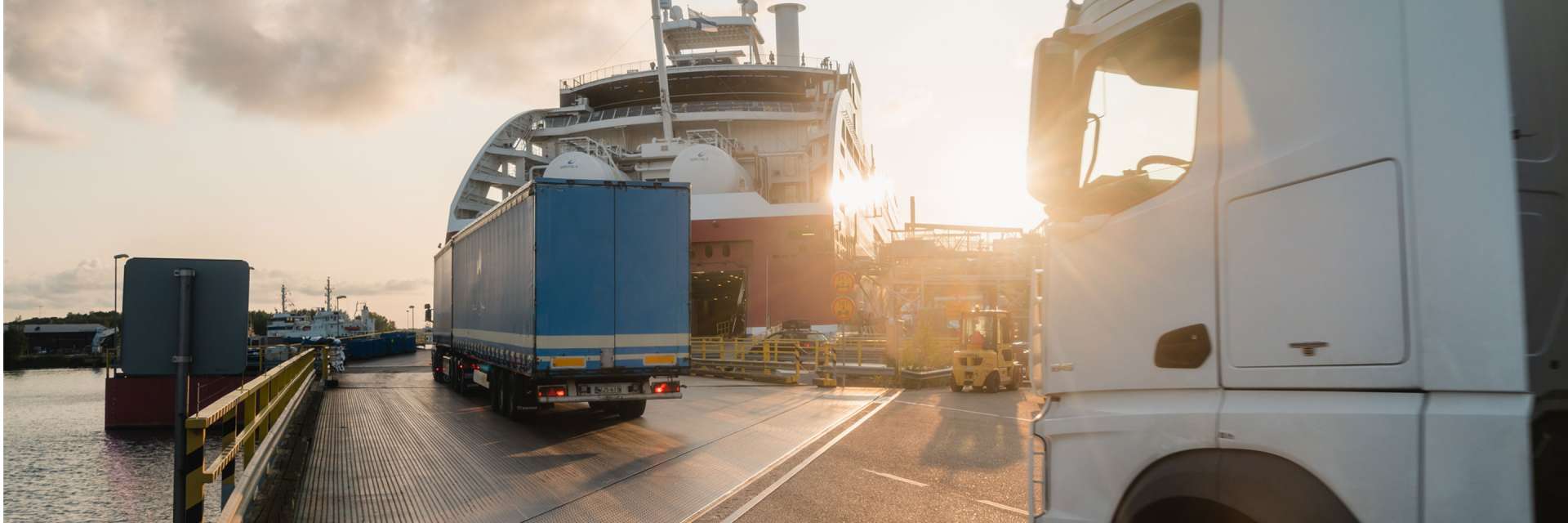Completed projects
The Ferry Port Turku project planned measures to develop the infrastructure, logistics, and safety of the Ferry Terminal Turku project. The project received support from the European Union’s Connecting Europe Facility.
The key goals of the project
- renewal of the quays that will be used by the shipping companies and planning the procurement of related contracts
- compiling a cost-benefit analysis on the construction of the joint terminal
- planning of project management and communication.
Due to increased security threats in public transport in Europe, there is a need to minimise this danger at the maritime terminals. Ensuring passenger traffic security is especially challenging in the core ports of Turku and Stockholm. As the port calls of the ferries on the liner traffic between these two ports lasts only for ca. 1 hour, the disembarkation and boarding of passengers as well as unloading and loading of vehicles need to be executed without any delay to keep to the tight schedule of the ships. This severely limits the available options to control the boarding passengers, vehicles and luggage.
The SecurePax project will tackle this challenge. Harmonised and interoperable digitalised security and ICT solutions will be implemented in passenger harbor area of the Port of Turku and in the Viking Line and Tallink Silja passenger terminals in the ports of Turku and Stockholm.
The SecurePax project implements digitalised security services and solutions not used before in maritime passenger terminals to ensure sustainable and efficient maritime transport in the long run. The best solutions and piloted technologies will be implemented in full scale in the new joint passenger terminal of the Port of Turku after the end of the project. The successful results will be also shared with the wider maritime community in Europe. SecurePax has been awarded funding from Connecting Europe Facility (CEF).
- The key goals of the project
- Enable detection of the identity of the boarding passengers in the Viking Line and Tallink Silja passenger terminals in the Port of Turku and exchange of information with the respective authorities. This will be done by mapping and piloting suitable technical solutions for digital registration of passengers and their identity.
- Explore the possibilities to prevent the boarding of unwanted persons in close cooperation with national authorities. For this purpose, the due process and the practical interpretation and implementation of the In-ternational Ship and Port Facility Security (ISPS) Code will be clarified.
- Enable detection of stowaways and dangerous items in the vehicles, luggage or on passengers, in the passenger harbour area in the Port of Turku and in the passenger terminals of Viking Line and Tallink Silja in the ports of Turku and Stockholm. For this purpose the available technologies will be explored and suitable solutions will be piloted and their technical suitability and regulatory compliance will be evaluated.
- Explore the ways to digitalise and harmonise the different security functions in the passenger harbour area of the Port of Turku.
- Pilot an internal high-speed broadband network based on 5G network technology in the passenger harbour area in the Port of Turku.
The SMARTER programme is part of the Sea4Value project, the purpose of which is to create internationally multipliable models towards digitalisation, service innovation and information flows in maritime transport which will support existing fleets and in the long term help to prepare for intelligent and autonomous seafaring and navigation.
As a project, SMARTER aims at social effectiveness by providing researched recommendations for business operations, use and sharing of data, and standardisation. At the centre lie the experiments the purpose of which is to shorten the turnaround times of ships, optimise truck traffic, and improve the flow of passenger traffic.
Key goals of the project
- Develop solutions that reduce the emissions of ro-pax and ro-ro ports by optimising the port operations and enhancing the management of both cargo and passenger flows.
- Enable better experience for all operators.
The project will update the existing sea connection between the ports of Turku, Mariehamn and Stockholm. The updating of the sea route includes a new passenger and car ferry (ro-pax), additional environmental investments and port investments to meet the needs of a new larger vessel and the growing cargo and passenger volume.
The project partners are the Port of Turku, City of Turku, Viking Line and the Port of Mariehamn from Finland, and the Port of Stockholm from Sweden. The project has received CEF funding from EU.
The key goals of the project
- Improve the sustainability and environmental soundness of maritime traffic
- Enhance the movement of passengers and cargo between Finland and Sweden
- Promote the demand for alternative fuels in the Baltic Sea region.
Port of Turku’s role in the project
- Act as the co-ordinator of the project
- Develop the port area logistics regarding traffic arrangements and vehicle measurement system
- Automate the mooring and unmooring of the ship.
The goal of the project is to use digitalisation and open information to renew the business opportunities of ports and find new ways for ports to utilise and benefit from the digital transition in their business operations. The project acts as a pioneer for the digitalisation of ports and at the same time aims at long-term development co-operation with universities. The goal of the project is to present examples of the port administrators to increase understanding of the digital services and generate interest and commitment in other logistics industry operators towards the business opportunities provided by digitalisation.
Key goals of the project:
- Through digitalisation, ports are made a more active element of the European core network corridor which will affect the bottlenecks of traffic nodes, improve cross-border connections, and promote the integration of modes of goods transports
- The project determines the current state of the systems in use and identifies the most critical operating processes in which the challenges can be solved through digitalisation
- The goal is to develop the know-how, abilities, specialisation and outward orientation to respond to the needs of future competitiveness and renewal
Port of Turku’s contribution to the project:
- part-financier of the project
- member of the project’s steering group
The ability of operators in the Baltic Sea region to prepare for accidents was improved by standardising the security practices of the Baltic Sea rescue departments and ports. Managed by the University of Turku, the co-operation project received funding for 2016–2019 from the EU’s Baltic Sea Programme. The project involved 15 partners from six Baltic Sea countries.
Key goals of the project:
- Develop the security practices of ports and facilitate working with the constantly changing and specified safety regulations and requirements
- Improve the awareness of the Baltic Sea region operators about each other’s practices, and increase the contacts between the operators in the region
- Promote the use of risk management methods and speed up the introduction of new technologies.
Port of Turku’s contribution to the project:
- Participation in the security practices arranged within the project
- Expansion of gate control in the Pansio area under construction.
The Neptunes project aimed at decreasing the noise during the stay in port of vessels by developing a general model for measuring noise and guidelines for determining the noise level of a vessel (noise certificate), and compiling the best practices for reducing noise. The project involved ports from Europe, Canada and Australia. It is not a project implemented through external funding (such as the EU), but the ports finance the project completely by themselves.
Key goals of the project:
- Better understanding of the noise problems caused by vessels
- The significance of different vessel types and noise sources regarding noise
- Better understanding of measuring noise and evaluating the problems related to legislation and regulations to reduce noise (best practices).
Port of Turku’s contribution to the project:
- member of the project’s steering group
- part-financier of the project
CONTACT US


